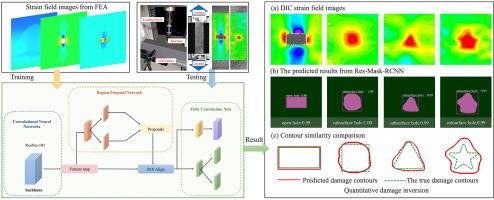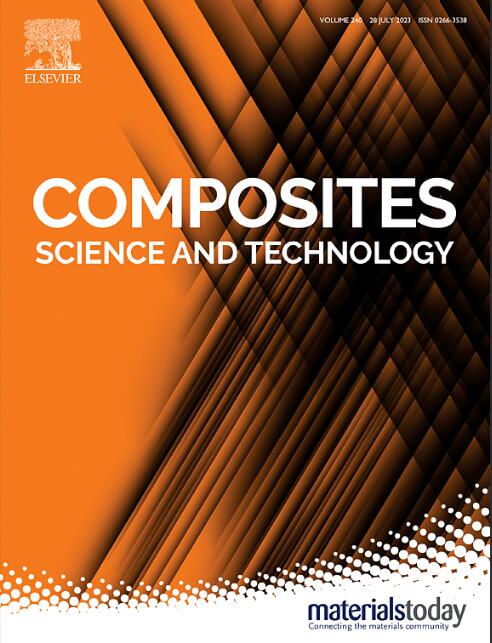推进结构健康监测:利用表面应变场对复合材料层压板的损伤进行深度学习增强型定量分析
IF 8.3
1区 材料科学
Q1 MATERIALS SCIENCE, COMPOSITES
引用次数: 0
摘要
复合材料因其优异的性能特点,已被广泛用作航空航天应用中的关键部件。如何实时准确地识别和量化复合材料结构中的各类损伤是一项重大挑战。本研究介绍了一种基于应变场的创新型损伤检测方法,该方法集中采用了深度学习技术。本研究利用 Res-Mask R-CNN 准确地检测出复合材料层压板内的各种形式的损伤并对其进行分类,包括开放孔洞、次表层孔洞和分层。此外,该方法还能对受损区域进行精确定位和量化。一系列实验和模拟验证了网络模型的准确性和稳健性。损坏反演实验表明,损坏区域的面积误差已降至 7.4%,位置误差不超过 3.31 毫米。在模拟场景中,复杂损伤轮廓的形状上下文距离不超过 0.21,表明损伤的关键几何特征已被成功保留。这项研究为复合材料层压板的损伤检测和实时结构健康监测提供了一种有效的新方法。本文章由计算机程序翻译,如有差异,请以英文原文为准。

Advancing structural health monitoring: Deep learning-enhanced quantitative analysis of damage in composite laminates using surface strain field
Composite materials have been widely used as critical components in aerospace applications due to their excellent performance characteristics. The real-time accurate identification and quantification of various types of damage within composite material structures pose a significant challenge. This study introduces an innovative damage detection method based on strain fields, which centrally employs deep learning techniques. Utilizing the Res-Mask R–CNN, this study accurately detects and categorizes various forms of damage within composite laminates, including open holes, subsurface holes, and delamination. Moreover, this method also enables precise localization and quantification of damaged areas. A series of experiments and simulations have validated the accuracy and robustness of the network model. Damage inversion experiments demonstrate that the area error of the damaged regions has been reduced to 7.4 %, and the positional error does not exceed 3.31 mm. In simulated scenarios, the shape context distance for complex damage contours does not exceed 0.21, indicating that the critical geometric features of the damage have been successfully preserved. This study provides an effective new approach for damage detection and real-time structural health monitoring of composite laminates.
求助全文
通过发布文献求助,成功后即可免费获取论文全文。
去求助
来源期刊

Composites Science and Technology
工程技术-材料科学:复合
CiteScore
16.20
自引率
9.90%
发文量
611
审稿时长
33 days
期刊介绍:
Composites Science and Technology publishes refereed original articles on the fundamental and applied science of engineering composites. The focus of this journal is on polymeric matrix composites with reinforcements/fillers ranging from nano- to macro-scale. CSTE encourages manuscripts reporting unique, innovative contributions to the physics, chemistry, materials science and applied mechanics aspects of advanced composites.
Besides traditional fiber reinforced composites, novel composites with significant potential for engineering applications are encouraged.
 求助内容:
求助内容: 应助结果提醒方式:
应助结果提醒方式:


